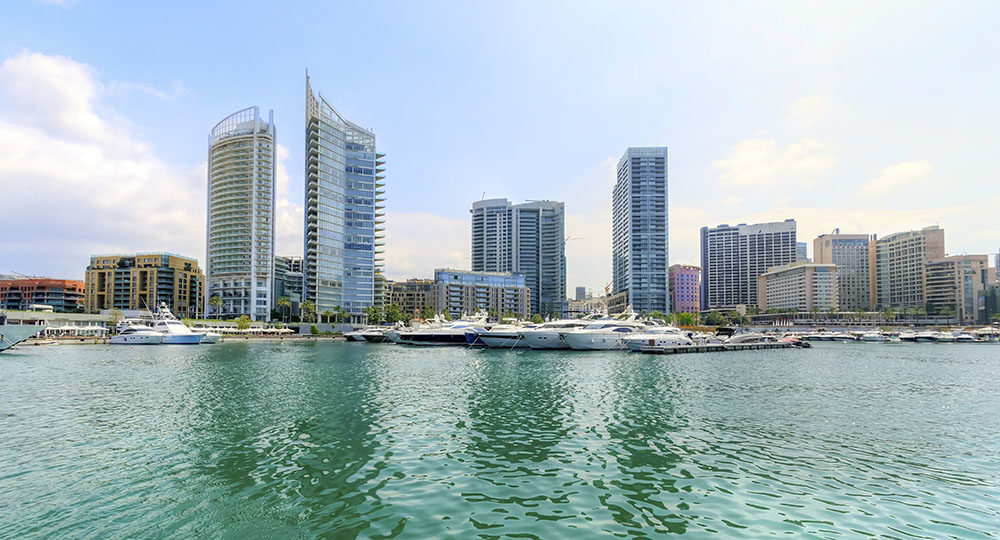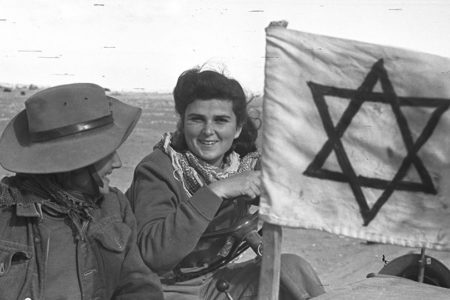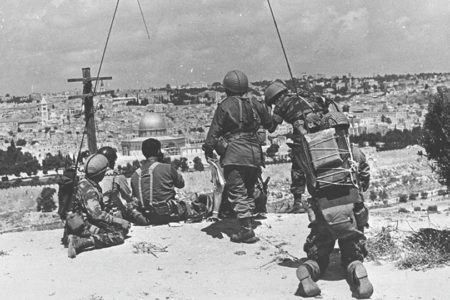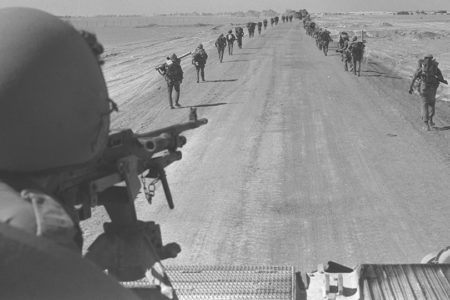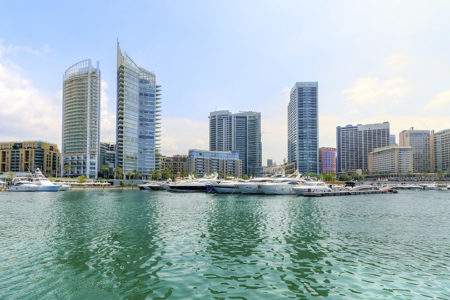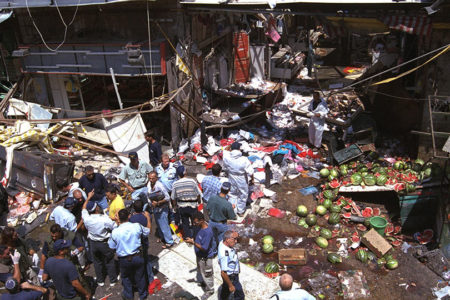Lebanon: Land Of Beauty, Land Of War
The Bible pictures Lebanon as a land of towering mountains covered by tall cedars, rising above lush valleys with flowing rivers. Although few of the famed trees grow in the rugged mountains of modern Lebanon, the land is still well watered and green. But its natural beauty has been severely scarred in recent decades by the blistering battles of war.
My eyes first rested upon the mountains of Lebanon on a clear Christmas Day in 1980. I had just arrived at an Israeli agricultural kibbutz along the northern border, where I would live for one year—often in a bomb shelter—with 12 other international Christian volunteer workers. The snow-capped peaks of Mount Hermon, about 20 miles to the north, glistened in the afternoon sun. It was a breathtaking sight.
However, the majestic scene was marred by the constant drone of Soviet-made rockets crashing down on the nearby south Lebanese Christian towns of Marjayoun and Klea. Inhabited mainly by Maronite Catholics, the twin towns were frequently shelled by Yasser Arafat’s PLO forces, situated in the hills just above them.
It was almost inevitable that internal fighting would engulf the small Mideast country—the only modern Arab state established with a Christian majority. Civil strife erupted in early 1958 when Muslim groups, unhappy with the Maronite-led government’s alliances with Western nations, staged an armed revolt. Violence raged for several months until U.S. Marines arrived in July. Fighting broke out again in 1969 when PLO terrorists, based in burgeoning Palestinian refugee camps in southern Lebanon, launched armed assaults across the southern border into Israel. The Israeli Air Force responded with bombing raids on PLO targets.
The PLO presence in Lebanon mushroomed after Arafat’s men were forced out of Jordan following a failed 1970 coup attempt against King Hussein. The Palestinian fighters added fuel to internal incendiary tensions. Fearing further Israeli reprisals, most Maronite leaders opposed PLO attacks from Lebanese soil, while Muslim officials generally supported them.
Another source of tension was the fact that the Muslim birthrate was much higher than that of the Christians. Claiming they now represented the majority community, Islamic politicians demanded a larger role in governing Lebanon, which the Maronite establishment was not willing to give them.
Full-scale civil war broke out in March 1975. Aided by breakaway units of the Lebanese Army and PLO fighters, Muslim militiamen rapidly gained ground against their outnumbered Christian rivals. Thousands were killed in the fierce battles, including many civilians.
Fearing defeat, Maronite leaders invited Syrian troops to enter their country as “peacekeeping” forces. They did so in the spring of 1976, and the fighting gradually subsided. Yet Syrian dictator Hafez Assad had other goals in mind. He regarded his tiny neighbor, granted independence by France in 1943, as an integral part of what he termed “Greater Syria,” which also included most of Israel and Jordan.
As it became clear to Lebanese Christian leaders that Assad planned to install a puppet government in Beirut, secret approaches were made to Israel. Pierre Gemeyal, the most prominent Maronite leader, sent a representative to meet with Prime Minister Yitzhak Rabin. The meeting, in the port of Haifa, was followed by others, and soon Israel was supplying the Maronites—who promised to help end PLO attacks on northern Israel—with rifles, antitank rockets, and Sherman tanks.
Despite the assistance, Rabin had serious questions about Maronite abilities and intentions. However, this was less true of Likud party leader Menachem Begin, who was elected to succeed Rabin in 1977. The new Prime Minister was much more inclined to assist the Lebanese Christians, whom he saw as a persecuted minority in a sea of Mideast Muslims—not unlike Israel’s Jews.
The alliance was strengthened after Israeli army forces conducted their first major military foray into Lebanon in 1978, pushing PLO fighters back from the Israeli border. A small security belt was established in the wake of the operation, patrolled by both United Nations troops and a small Lebanese Christian militia headed by Major Saad Haddad.
Arafat responded to the action by continuing to build up a PLO mini-state just north of the security belt. Local Palestinian commanders levied heavy taxes on their harassed Lebanese subjects, while their underlings often forced themselves on young women. Even ardent Muslim supporters came to hate their cruel PLO masters, leading some to join Haddad’s forces.
Although strongly supported by Israel, Major Haddad could not totally prevent PLO terrorists from infiltrating across the border or stop rockets from landing in Galilee towns and farming communities. Such attacks, which left hundreds of Israelis dead or wounded, prompted Prime Minister Begin to order aerial bombing of Palestinian targets, including the PLO headquarters in Beirut.
The Palestinians responded with more cross-border shelling, which climaxed in July when more than 1,200 rockets and shells rained down on northern Israeli towns and kibbutz settlements. Six civilians were killed in the hellish shelling, and 59 others were wounded. In an unprecedented move that shocked Israeli leaders, tens of thousands of civilians fled the border region before a U.S.-mediated cease-fire took effect on July 24.
Prime Minister Begin said he would not rest until the PLO was driven out of southern Lebanon. Under the supervision of Defense Minister Ariel Sharon, elaborate war plans were drawn up for a future operation. Some details were shared with Lebanese Christian forces’ commander Bashir Gemeyal, the charismatic son of the Maronite political leader, who promised to support Israeli troops in the coming conflict.
Begin and Sharon did not hide their war intentions from the Reagan Administration, although they stressed that they were only planning to launch a short operation against the PLO. American officials quietly signaled their approval. Still, they were concerned that the fighting could spill over to involve Syria’s large occupation force, numbering about 35,000 and protected by Soviet-supplied antiaircraft missiles—raising the specter of a superpower collision.
Yasser Arafat was likewise preparing for war. His agents purchased light arms, tanks, and artillery from several Eastern European Communist states and from North Korea, which supplied a new weapon that could fire 30 rockets simultaneously. More importantly, he signed a joint defense pact with Assad, who was strongly backed by Moscow.
I was literally on my way to begin my new job as News Director at the Voice of Hope—the only gospel radio station in Lebanon—when the cease-fire broke down on April 21, 1982. An Israeli soldier patrolling in south Lebanon was killed by a PLO land mine, which led Begin to order the pounding of Palestinian positions. Despite shelling directed at my car, I arrived safely at the station, located in a valley below Marjayoun.
Arafat did not allow his forces to shell northern Israel on that occasion. But he did so two weeks later, when more than 200 rockets crashed down all along the border. From that point on, most people assumed that full-scale warfare was imminent.
The actual trigger for the 1982 Lebanon War, however, occurred in far off London. Late on the night of June 3, Israeli Ambassador Shlomo Argov was shot in the head by terrorists. Although the attack was traced to a Palestinian group not under Arafat’s control, the cabinet authorized the bombing of PLO headquarters in Beirut. When PLO rockets again landed in the Galilee, the government approved Begin’s request for a major military campaign in Lebanon, which began on June 6.
“Operation Peace For Galilee” was officially aimed at pushing PLO forces beyond rocket range of Israel’s northern border—about 23 miles. This goal was largely achieved by June 8. However, Defense Minister Sharon had much grander ideas. He had been planning—without cabinet knowledge—a much wider conflict that would banish the PLO from Lebanon and install Bashir Gemeyal as President. To achieve this, his forces would have to surround and besiege PLO outposts in Beirut—which they did, even though the Lebanese capital was more than 50 miles north of Israel.
Israeli troops would also have to neutralize Syrian forces in the Lebanese capital by cutting them off from reinforcements in the eastern Bekaa Valley. They achieved this goal by capturing the strategic Beirut-Damascus highway on June 13—but not before encountering heavy Syrian resistance.
When an Israeli unit became trapped in a mountain village, Sharon argued that Syria’s Russian-supplied antiaircraft missiles had to be destroyed so that Israeli aircraft could safely aid the stranded soldiers. With some trepidation, the cabinet approved Sharon’s plan to attack Syria’s surface-to-air missiles, and the operation took place on June 9.
It was one of the largest air battles ever, with approximately 200 Israeli and Syrian jets targeting and evading one another in the crowded skies above Lebanon. In the end, 29 Syrian warplanes were shot down—a humiliating loss for Assad—while only a handful of Israeli jets were damaged or destroyed. More importantly, 17 of the 19 Syrian antiaircraft missile batteries in Lebanon were either wiped out or severely damaged.
The Israeli-Syrian clashes set off alarms in Washington and Moscow. Shocked that their air defense system proved so easy to destroy, Kremlin officials began to stockpile weapons and equipment at southern Soviet airfields, although they rejected Syria’s request for an immediate air umbrella. When President Reagan learned of the Soviet war preparations, he asked Begin to halt the Israeli advance. A cease-fire was agreed to, which went into effect at noon on June 11.
However, fighting broke out again within days. Israeli forces quickly cut off the Beirut-Damascus highway and surrounded and besieged PLO forces in the capital. To Begin’s chagrin, the Israeli advance was only marginally supported by Bashir Gemeyal’s Christian forces.
In the end, the summer-long shelling of Palestinian positions in Beirut—which led to civilian casualties, especially since Arafat’s men deliberately operated out of schools and hospitals—led to mounting world condemnation of the Jewish state. It also fueled a growing debate inside Israel, with many arguing that it was foolish to attack PLO forces inside the crowded Arab city.
The debate came to a head in September, after Gemeyal was elected president of Lebanon and was then suddenly assassinated by Syrian-backed terrorists. Seething over the sudden loss of their revered leader, Gemeyal’s men sought revenge in two PLO-controlled refugee camps, Sabra and Shatilla. Hundreds of Palestinians, including women and children, were slaughtered in the Maronite assault. An official Israeli investigation later concluded that while Begin, Sharon, and other government leaders did not know that the wholesale slaughter was occurring, they should have anticipated it and not allowed Gemeyal’s angry forces into the camps.
With his forces under siege, Arafat finally fled Beirut, and eventually Lebanon. Israeli troops did not retreat from their positions until 1984, with some remaining to this day in the southern “security zone” enclave. More than 600 soldiers were killed in the Lebanon conflict. The unexpectedly high death toll and the political storm over the government’s handling of the war and the refugee camp massacres led a demoralized Begin to resign as Prime Minister in 1983.
Syrian soldiers continue to occupy most of Lebanon, and rockets still rain down on northern Israel. They are no longer fired by the PLO—now engaged in a tenuous peace process with Israel—but mainly by the Syrian-backed Hizbullah militia, established with Iranian help in the wake of the 1982 war. Israeli jets and artillery respond with bombardments against attacking positions, as they have for almost 30 years. The unstable situation is surely a recipe for further conflict in the troubled Land of the Cedars.
